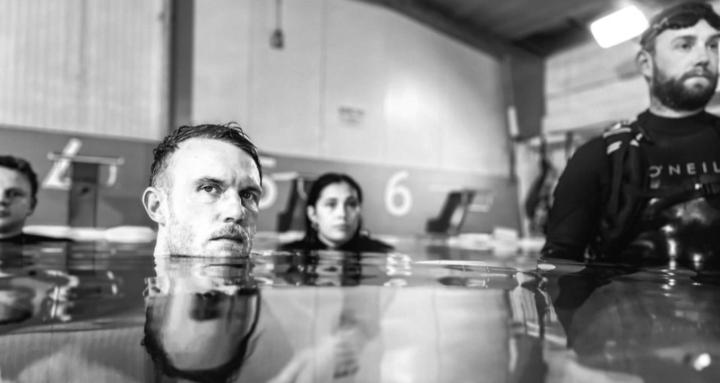Jan 2 (edited) • General discussion
Do the breathing muscles "steal blood flow from the legs" when they fatigue
Respiratory Metaboreflex refers to a physiological mechanism that helps regulate blood flow and breathing during exercise. Simply put, Respiratory Metaboreflex is where the body restricts blood flow to the limbs (in particular the legs) when the breathing muscles fatigue. The body will do this to ensure the role of breathing continues. This is because breathing is crucial to survival. Therefore, when the body experiences a conflict between breathing and moving, breathing wins out.
Respiratory Metaboreflex involves a feedback loop where the metabolic demands of active muscles affect the respiratory and cardiovascular systems. The metabolic costs of supporting respiratory muscle function during maximal exercise requires up to 16 % of the bodies total cardiac output - this is a huge percentage of overall cardiac output. The body works hard to ensure that blood flow and oxygen delivery to the respiratory muscles are prioritised during high intensity work loads as a means of survival.
I am going to give a simplified explanation of Respiratory Muscle Metaboreflex.
- During high intensity work (Anaerobic training) the respiratory muscles have to work hard to maintain adequate oxygenation and Carbon dioxide removal. As high intensity work is sustained the breathing muscles experience a build up of metabolites (such as lactic acid). Think high intensity work and heavy/fast breathing - imagine peddling on a stationary bike and going as hard as you can without stopping and the associated fast, deep and heavy breathing that would be required to maintain such output.
2. As the metabolites in the respiratory muscle (diaphragm, intercostal muscles) accumulate, sensory receptors in those muscles send signals to the brain to activate the sympathetic nervous system (stress response).
3. The increase in Sympathetic nervous system activity results in an increase in heart rate (pump more blood and oxygen around the body to meet the higher energy demands of body tissue) and an increase in blood pressure (to help maintain cardiac output). As part of this sympathetic response, blood flow to the limbs is redirected to the breathing muscles. This occurs secondary to limb vasoconstriction (blood vessels constrict reducing blood flow to the legs). This in turn redistributes blood flow to the breathing muscles + lungs (see attached images)
4. Respiratory muscles can steal over 10-15% of total cardiac output from peripheral muscles (arms/legs) as part of Metaboreflex survival response. This leads to reduced oxygen transport to the working muscles and ultimately this results in the muscles fatiguing - you would experience this as heavy legs or arms and a slowing down in the activity of these muscles (quads, hamstrings, calves, biceps etc).
SOOOOOOOO often when we see athletes/people "gassing out" we relate it back to thier conditioning/cardio/muscle endurance but little focus is given to respiratory muscle fatigue - Whats the solution? Train your breathing muscles and the respiratory system like you would any other body system (cardiovascular / muscular systems). This requires training at high intestines and learning to shift large volumes of air rapidly with good rate and depth control. Baring in mind that it's not solely high intensity work that can lead to respiratory muscle fatigue - endurance training/events can also result in respiratory muscle fatigue.
The way our breathing course is setup is to first improve your breathing mechanics - get good access to your diaphragm. This will naturally strengthen your diaphragm particularly as you start applying good breathing mechanics into your training/sport/exercise. Improving the strength of your breathing muscles will help to delay the onset of the metaboreflex for the diaphragm. In reality the entire course is about improving breathing muscle strength and endurance and you will see that there are many exercises that work on both inspiratory and expiratory breathing muscle control. There are also many exercise that purposefully restrict your breathing during exercise which adds further load and resistance to your breathing muscles - good awareness of breathing rate control ensures adequate breathing depth and helps you to avoid over breathing which puts increased and excess demands on breathing muscles.
check out the videos / images for more info
5
5 comments

skool.com/dave-woods-integrated-training-9587
Master stress, stay clear and focused, and enhance recovery to measurably improve performance outcomes in work, sport, and life - with consistency
Powered by





